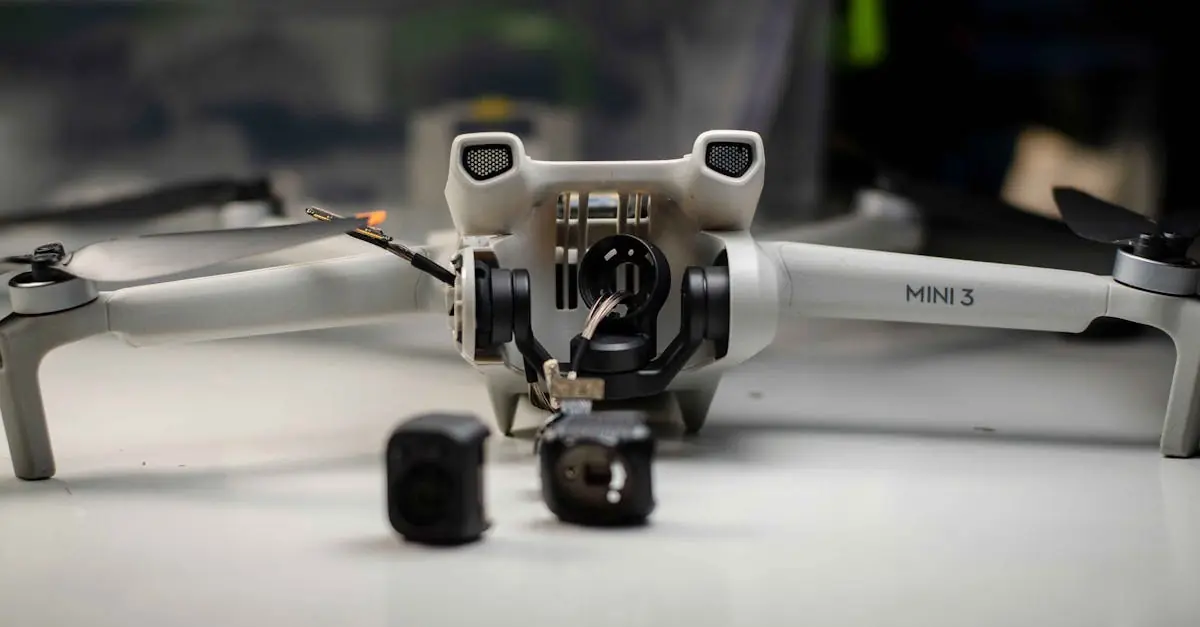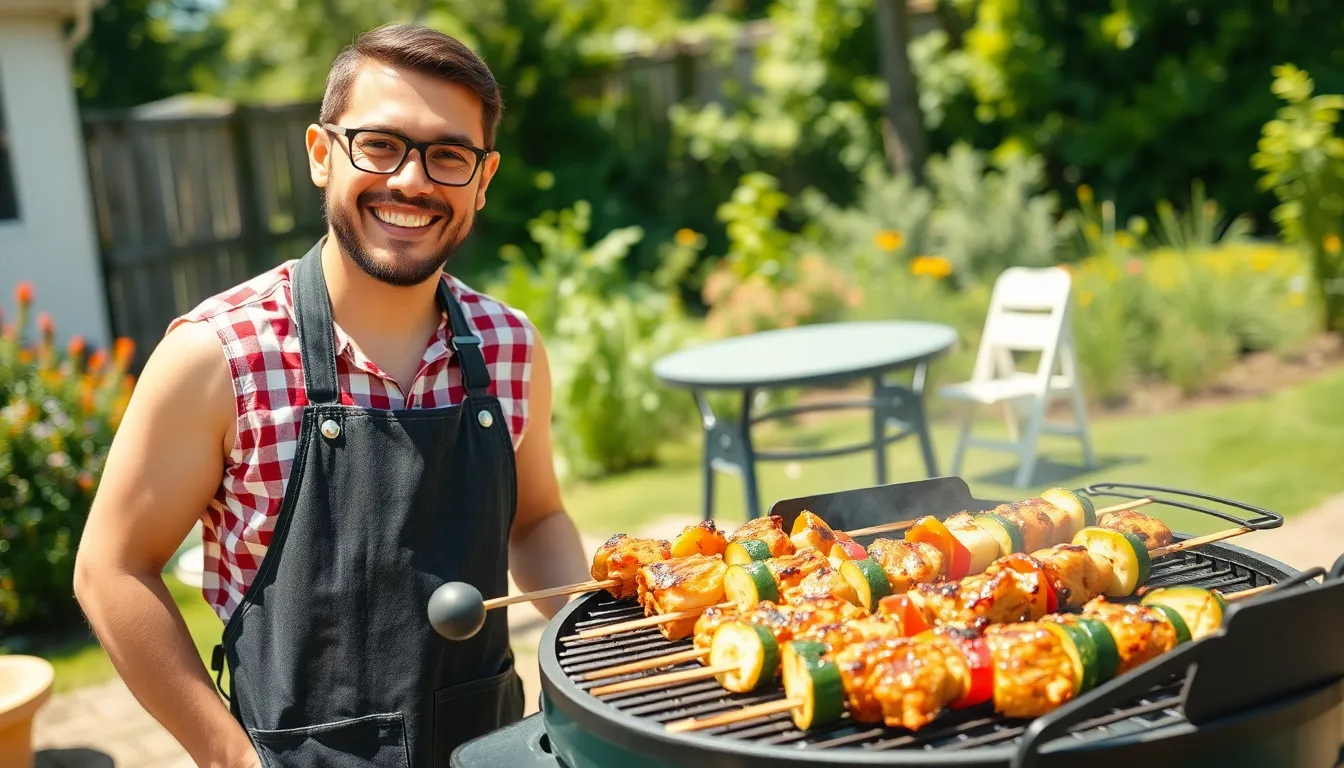Imagine a city where the air smells like fresh pine and the streets hum with the sound of happy pedestrians instead of honking cars. Welcome to the world of eco-city design tech, where innovation meets sustainability in a match made in green heaven. It’s not just about planting trees and hoping for the best; it’s about creating urban spaces that thrive alongside nature, making Mother Earth proud.
As cities grapple with growing populations and climate change, eco-friendly design tech offers solutions that are as smart as they are stylish. From energy-efficient buildings that practically breathe to smart waste management systems that make trash woes a thing of the past, these advancements are reshaping urban living. Get ready to dive into the future of cities that are not only livable but lovable, proving that going green doesn’t mean sacrificing modern comforts.
Table of Contents
ToggleOverview of Eco-City Design Tech
Eco-city design technology focuses on creating sustainable urban environments. Innovations in this area include energy-efficient buildings, which utilize advanced materials and design principles to minimize energy consumption. Smart waste management systems play a critical role, employing sensors and data analytics to optimize recycling and reduce landfill use.
Green infrastructure features prominently, integrating natural systems into urban planning to enhance air quality and manage stormwater effectively. Urban agriculture initiatives provide fresh produce, promoting local food systems within city environments. Renewable energy solutions, like solar panels and wind turbines, power eco-cities, reducing reliance on fossil fuels.
Transportation systems undergo transformation as well. Electric and shared mobility options encourage residents to reduce carbon footprints. Pedestrian-friendly designs improve accessibility, fostering healthier lifestyles through increased physical activity.
Community engagement remains vital in eco-city initiatives. Involving residents in planning ensures that developments align with their needs, enhancing both usability and appeal of the urban space. Data-driven decision-making supports planning and operational efficiencies, enabling cities to adapt quickly to changing environmental challenges.
Technological integration enhances monitoring and management capabilities. Real-time data allows city planners to track resource use and adjust strategies proactively. Integrated systems lead to more cohesive urban experiences, where technology supports a better quality of life for all inhabitants.
Ultimately, eco-city design technology represents a holistic approach, aiming to create environments that are not only functional but also sustainable and enjoyable.
Key Components of Eco-City Design
Eco-city design incorporates several core components that enhance urban sustainability and livability.
Sustainable Architecture
Sustainable architecture prioritizes energy efficiency and resource conservation. Buildings often utilize renewable materials, reducing the environmental impact. Designs typically feature passive solar heating and natural ventilation, improving comfort while minimizing energy consumption. Furthermore, green roofs and walls contribute vegetation in urban spaces, enhancing biodiversity. Each structure aims to harmonize aesthetics and functionality, creating inviting environments for residents.
Green Infrastructure
Green infrastructure plays a crucial role in urban ecosystems. Systems such as permeable pavements manage stormwater effectively, reducing flooding risks. Vegetated swales and rain gardens filter pollutants, improving water quality before reaching natural bodies. Additionally, urban trees improve air quality and provide shade, enhancing microclimates. This holistic approach fosters more resilient cities, capable of withstanding climate challenges while promoting biodiversity and community well-being.
Smart Technology Integration
Smart technology integration drives efficiency and innovation in eco-city design. Sensors and IoT devices monitor energy and water usage, enabling real-time adjustments and promoting resource conservation. Data analytics support informed decision-making, allowing cities to adapt to changing needs. Furthermore, smart transportation solutions enhance mobility through ride-sharing apps and public transit tracking systems, reducing traffic congestion. This tech-savvy integration ultimately creates responsive urban environments that prioritize sustainability and improve quality of life.
Benefits of Eco-City Design Tech
Eco-city design technology offers numerous benefits across various dimensions. This approach enhances urban sustainability, ensuring that cities become more resilient and livable.
Environmental Impact
Improved air quality results from green infrastructure designed to filter pollutants. Urban agriculture initiatives not only reduce transportation emissions but also promote biodiversity. Energy-efficient buildings significantly lower energy consumption, leading to reduced greenhouse gas emissions. Water management systems mitigate flooding while conserving resources, contributing to the overall health of local ecosystems. Renewable energy sources like solar and wind power further decrease dependence on fossil fuels, empowering cities to achieve carbon neutrality.
Economic Advantages
Cost savings arise from energy efficiency and resource conservation in eco-cities. Cities enjoy lower energy bills due to the use of renewable energy sources. Job creation stems from investments in green technologies and sustainable practices, boosting local economies. Increased property values occur as neighborhoods become more attractive through enhanced public spaces. Moreover, improved infrastructure reduces urban sprawl, promoting efficient land use and lowering development costs.
Social Benefits
Community engagement strengthens social ties and fosters a sense of belonging among residents. Public spaces designed for pedestrians and cyclists encourage healthier lifestyles and increased physical activity. Access to green spaces supports mental well-being and promotes relaxation. Enhanced public transportation options cultivate mobility and accessibility, ensuring that all residents can navigate the city easily. Overall, eco-city design tech cultivates vibrant, inclusive communities that prioritize well-being.
Challenges in Eco-City Design Implementation
Implementing eco-city design technology faces several challenges that hinder progress toward sustainable urban development.
Financial Barriers
Funding for eco-city projects often proves inadequate. High initial costs associated with innovative technology deter investment from developers. Inconsistent financial support from government initiatives further complicates project viability. Budget constraints restrict cities’ ability to pursue comprehensive planning. Limited access to financial incentives or tax breaks reduces attractiveness for eco-friendly investments. As a result, cities may prioritize short-term gains over long-term sustainability, delaying the transition to greener urban environments.
Technological Limitations
Existing technology sometimes lacks the scalability required for widespread implementation. Integration challenges arise when coordinating various systems and platforms. Limited data compatibility often hampers smart technology adoption, restricting efficient resource management. Additionally, the need for continuous updates and maintenance can introduce significant operational complexities for city planners. Some communities may also face gaps in technical knowledge, making it difficult to leverage advanced eco-city solutions effectively. Consequently, these technological barriers prevent cities from fully realizing the benefits of eco-city design.
Future Trends in Eco-City Design Tech
Emerging trends in eco-city design technology focus on innovative materials and sustainable practices. Smart city frameworks utilize real-time data to improve resource management and streamline public services. Integrated transportation systems increasingly rely on electric vehicles and bike-sharing programs to promote cleaner commutes.
Vertical gardens are gaining popularity, enhancing urban greenery while improving air quality. Advanced building materials, such as recycled concrete and zero-carbon components, reduce environmental impact. Urban agriculture initiatives foster local food production, decreasing transportation emissions and enhancing food security.
Blockchain technology is being explored for transparent energy trading, empowering residents to manage their energy use effectively. Energy storage systems, like battery banks, optimize renewable energy consumption and alleviate pressure on the grid. Water conservation technologies, including rainwater harvesting and greywater recycling, support efficient water management in urban settings.
Community-driven design processes are becoming essential, aligning developments with residents’ aspirations. Crowd-sourcing platforms allow for gathering feedback on urban plans, ensuring that public needs shape eco-city advancements. Partnering with academic institutions fosters research and innovation, leading to practical solutions for urban challenges.
Sustainable tourism is also a focal point, as cities adopt eco-friendly practices to attract travelers. Green certifications for buildings promote accountability and encourage adherence to environmental standards. These growing trends signal a shift towards more resilient, livable urban areas, emphasizing the balance between ecological integrity and modern comfort.
Conclusion
Eco-city design technology is paving the way for a sustainable urban future. By integrating innovative solutions and engaging communities, cities can create environments that prioritize both ecological health and quality of life.
The advancements in renewable energy, smart infrastructure, and urban agriculture not only address pressing environmental challenges but also enhance economic and social well-being.
As cities continue to evolve, overcoming financial and technological barriers will be crucial. Embracing these eco-friendly practices will lead to resilient urban spaces that harmonize with nature while meeting the needs of their inhabitants.







